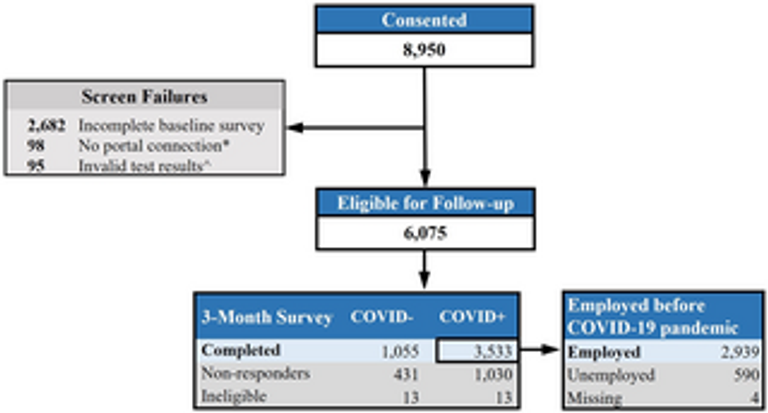ABSTRACT
While the early effects of the COVID-19 pandemic on the United States labor market are well-established, less is known about the long-term impact of SARS-CoV-2 infection and Long COVID on employment. To address this gap, we analyzed self-reported data from a prospective, national cohort study to estimate the effects of SARS-CoV-2 symptoms at three months post-infection on missed workdays and return to work. The analysis included 2,939 adults in the Innovative Support for Patients with SARS-CoV-2 Infections Registry (INSPIRE) study who tested positive for their initial SARS-CoV-2 infection at the time of enrollment, were employed before the pandemic, and completed a baseline and three-month electronic survey. At three months post-infection, 40.8% of participants reported at least one SARS-CoV-2 symptom and 9.6% of participants reported five or more SARS-CoV-2 symptoms. When asked about missed work due to their SARS-CoV-2 infection at three months, 7.2% of participants reported missing ≥10 workdays and 13.9% of participants reported not returning to work since their infection. At three months, participants with ≥5 symptoms had a higher adjusted odds ratio of missing ≥10 workdays (2.96, 95% CI 1.81–4.83) and not returning to work (2.44, 95% CI 1.58–3.76) compared to those with no symptoms. Prolonged SARS-CoV-2 symptoms were common, affecting 4-in-10 participants at three-months post-infection, and were associated with increased odds of work loss, most pronounced among adults with ≥5 symptoms at three months. Despite the end of the federal Public Health Emergency for COVID-19 and efforts to “return to normal”, policymakers must consider the clinical and economic implications of the COVID-19 pandemic on people’s employment status and work absenteeism, particularly as data characterizing the numerous health and well-being impacts of Long COVID continue to emerge. Improved understanding of risk factors for lost work time may guide efforts to support people in returning to work.

